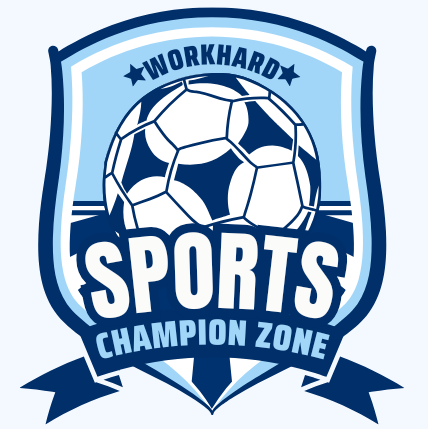Length of the Bowling Alley dimension, Bowling lane aspects regularly measure 60 feet in length and 42 inches wide. The path comprises a few sections the methodology region where bowlers start, the foul line denoting the start of the lane, and the pin deck where the pins are set up. Along the lane, there are also markings for focusing on and situating. Every lane’s development should stick to explicit norms to guarantee fair and steady play for all bowlers. This distance is normalized to guarantee reasonableness and consistency across back doorways all around the planet.
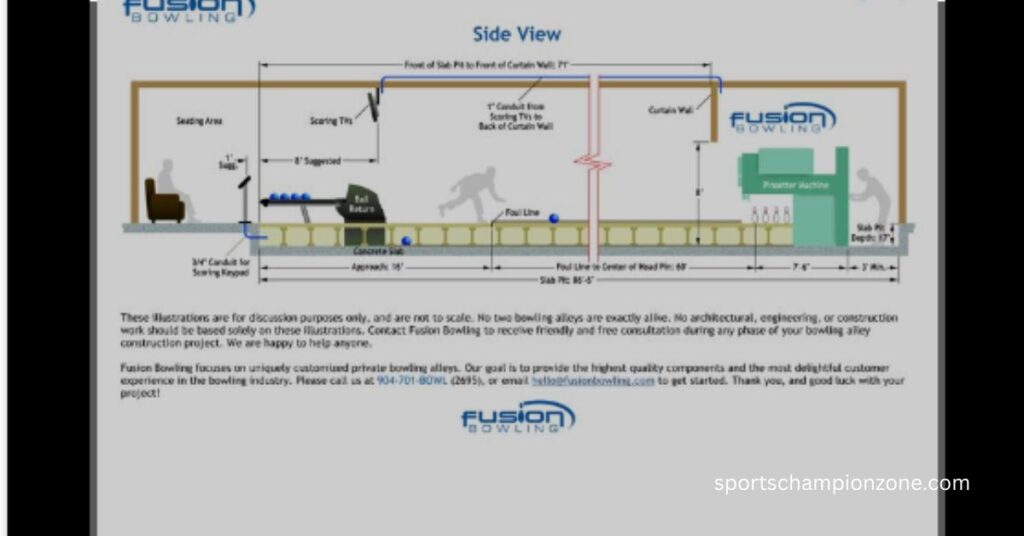
Impact on Gameplay
The length of the back street straightforwardly influences how bowlers convey their shots. A more extended back street gives more space to the ball to gather speed as it goes towards the pins. This can bring about quicker ball conveyance and possibly more noteworthy pin activity upon influence.
Adjusting Technique
Bowlers should adjust their methodology and delivery strategy in view of the length of the back street. On longer lane, they might have to take longer walks and delivery the ball with more power to successfully arrive at the pins. On the other hand, more limited paths might require more limited steps and a gentler delivery to try not to overshoot the objective.
Strategic Considerations
Understanding the length of the bowling alley dimension is fundamental for bowlers and fosters compelling techniques. They should check the distance to the pins precisely and guess how the ball will act as it goes down the lane. Factors, for example, path conditions and oil designs, likewise assume a part in deciding how bowlers change their methods to accomplish the best outcomes.
Consistency and Fairness
By sticking to normalized aspects, bowling alleys guarantee consistency and fairness in interactivity. Whether contending in competitions or partaking in an easygoing game with companions, bowlers can expect similar essential design and aspects in any back street they visit.
Length of the Bowling Alley
Bowling alley dimension length is essential for interactivity, influencing how players point and the speed of their shots.
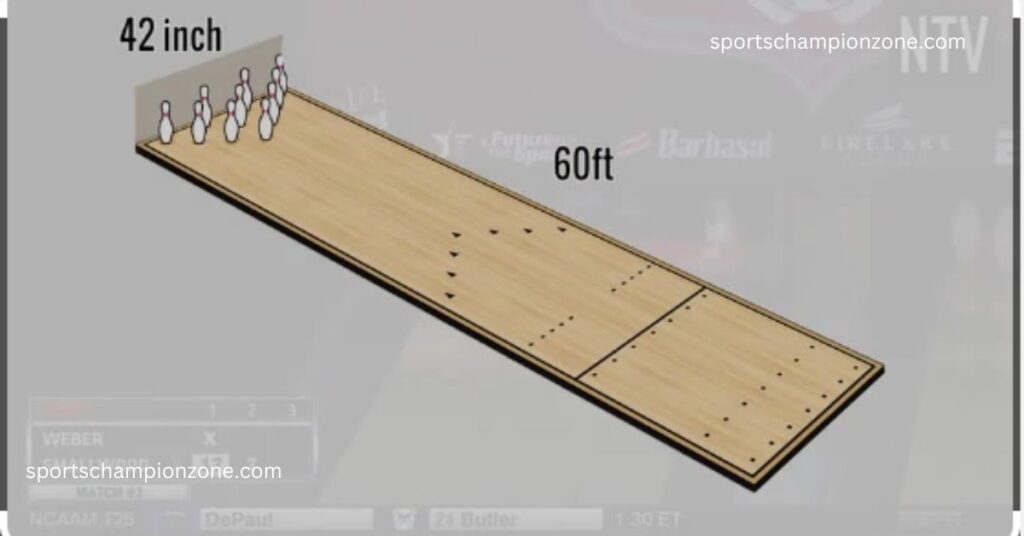
Influence on Ongoing Interaction
A more drawn out back street considers quicker ball conveyance and expanded pin activity, requiring changes in method and procedure. Adjusting Method Players should alter their methodology and delivery to suit the back street’s length, either with longer walks for longer lanes or more limited ones for more limited ones. Reasonableness and Consistency Normalized aspects guarantee decency and consistency across back streets, giving a level battleground to bowlers of all expertise levels.
Width of the Bowling Lane
Understanding the width of a bowling lane is fundamental for bowlers to explore their shots precisely and stay away from the drains.
Standard Width: A regular bowling lane is around 42 inches wide, giving more than adequate space to bowlers to point their shots and convey the ball with accuracy.
Significance in Interactivity
The width of the lane impacts the place where the ball enters the pin deck, influencing pin activity and the probability of a strike or extra.
Space for Exactness
A more extensive lane permits bowlers to target various regions of the pin deck, offering them more choices to change their chances and increase their odds of coming out on top. Staying away from the drains Bowlers mean to keep their shots inside the limits of the lane to stay away from the drains, which run along the edges and can prompt missed shots.
Consistency Across
Rear Entryways Normalized: lane widths guarantee consistency in ongoing interaction across various back streets, permitting bowlers to apply their abilities with trust in any setting.
Adjusting Strategies: Bowlers might change their methodology and delivery strategy in light of the width of the path, meaning to convey the ball precisely and accomplish ideal outcomes.
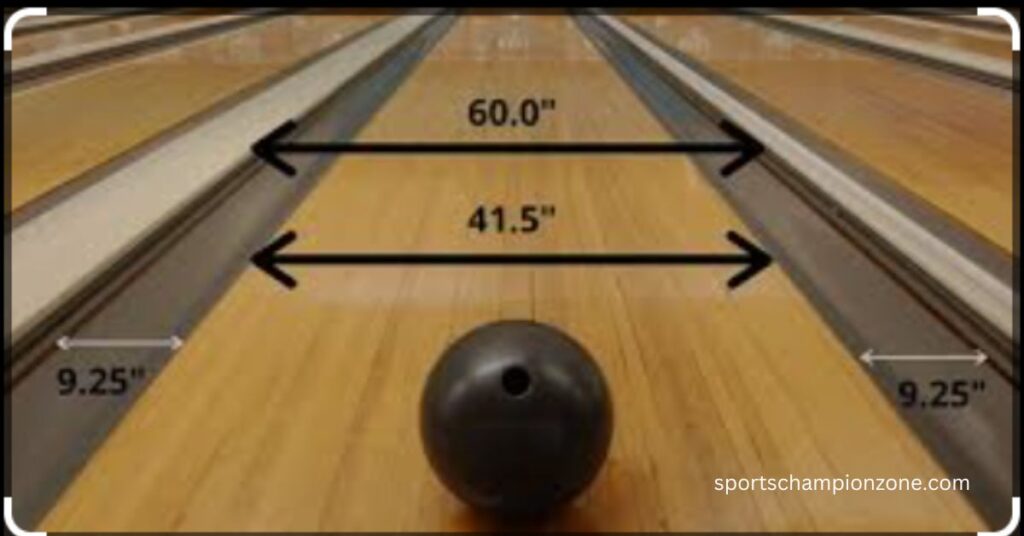
Approach Area and Lane Structure
Understanding the methodology region and lane structure is fundamental for bowlers to execute their shots effectively and explore the bowling alley with certainty.
Move toward Region
The method region is the segment of the bowling alley dimension where bowlers stand and get ready to convey their shots. It fills in as the vital beginning stage for each casing, giving bowlers the space and security expected to precisely execute their shots.
Significance of the Methodology Region
The method region makes way for the whole bowling shot, affecting the bowler’s very much planned approach region permits bowlers to lay out a steady musicality and approach, prompting more reliable shot execution and further developed execution.
Extending from the Foul Line
The region commonly reaches out around 15 feet from the foul line towards the pins. This distance gives bowlers enough runway to gather speed and create power in their shots without exceeding the foul line.
Smooth Surface for Footwork
The outer layer of the methodology region is painstakingly kept up to give a smooth and predictable surface for bowlers’ footwork. Appropriate upkeep guarantees that bowlers can keep up with their equilibrium and foothold all through their methodology, diminishing the gamble of slipping or sliding during their conveyance.
Lane Structure Bowling Alley Dimension
The bowling alley dimension structure alludes to the composition and design of the bowling alley dimension itself, including the game plan of sheets and the positioning of key components, for example, the foul line and pin deck.
Composition of the Lane
Bowling alley dimension are commonly developed from a blend of materials, including wood and engineered materials. These materials are painstakingly chosen to give a solid and reliable playing surface that can endure the mileage of customary use.
Boards Across the Width
The lane is partitioned into a progression of sheets that run on a level plane across its width. These sheets act as reference focuses for bowling alley dimension, permitting them to make exact acclimations to their shots in view of lane conditions and pin position.
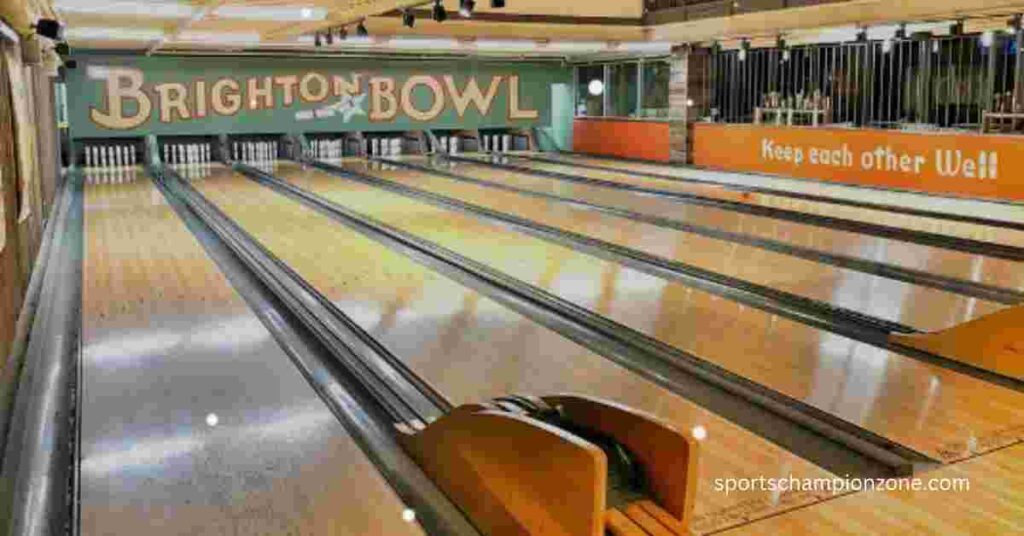
Middle Board and Alignment
The center leading body of the lane, frequently alluded to as the “middle board” or “target board,” is situated in the focal point of the lane’s width. Bowlers utilize this board as a source of perspective points for adjusting their shots and focusing on unambiguous pins on the pin deck.
Regulation Specifications
bowling alley dimension aspects and construction are administered by standard guidelines to guarantee consistency and decency in the game. These guidelines direct the components of the lane, the arrangement of key components, for example, the foul line and pin deck, and the materials utilized in development.
Gutter and Pin Deck
Understanding the drain and pin deck is fundamental for bowlers to plan their shots successfully and boost their scoring focus.
Gutter
The drain is a limited channel that runs along the two sides of the bowling lane, filling in as a limit that characterizes the playable region of the lane.
Function of the Gutter
The gutter goes about as a catchment region for balls that miss their planned objective on the pin deck. At the point when a ball enters the drain, it is redirected from the pins, keeping it from obstructing the scoring of the ongoing edge.
Staying away from the gutter bowling alley dimension mean to keep their shots inside the limits of the lane and stay away from the drain to expand their possibilities, raising a ruckus around town and scoring focuses. Wandering into the gutter regularly results in a “gutter ball,” which scores without focusing for the edge.
Key Utilization of the Drain
At times, gifted bowlers may deliberately utilize the drain for their potential benefit, utilizing strategies, for example, “snaring” or “curving” the ball to make it turn once more into play and strike the pins from an alternate point.
Pin Deck
The pin deck is the region toward the finish of the bowling lane where the pins are set up for each casing.
Arrangement of Pins: The pins are organized in a three-sided development known as the “pin rack,” with the head pin situated at the front and the excess pins organized behind it in a particular design.
Function of the Pin Deck: The pin deck fills in as the objective for bowlers, who expect to wreck whatever number of pins can be allowed with their shots.
Regulation Specifications
bowling alley dimension are dependent upon standard guidelines and determinations to guarantee consistency and decency in the game.
Strategic Considerations
Targeting and Strategy: Information on lane aspects empowers bowlers to foster viable focusing on method. By recognizing reference points on the lane, for example, sheets or bolts, bowlers can point their shots all the more precisely and increment their possibilities, raising a ruckus around town targets, like explicit pins or pin setups.
Lane Dimension Regulations
Direct the components of the bowling lane, including its length, width, and the distance between key components, for example, the foul line and pin deck. These determinations guarantee that back streets provide a steady playing experience to bowlers of all expertise levels.
Equipment Standards Regulations
Oversee the hardware utilized in bowling, including bowling balls, pins, and scoring frameworks. These guidelines guarantee that all players approach quality gear that meets the prerequisites of the game.
Lane Maintenance
Regulations may likewise incorporate rules for lane support, for example, oiling examples and cleaning plans. Legitimate lane support is fundamental for safeguarding the respectability of the playing surface and giving a fair playing climate to all bowlers.
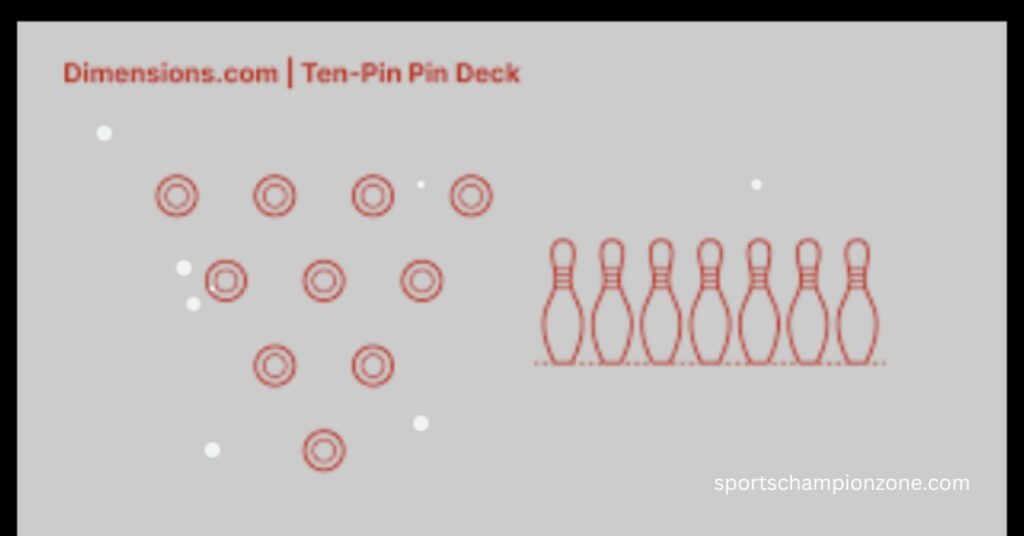
Importance of Dimensions in Bowling
Understanding the components of a bowling alley is urgent for bowlers to successfully explore the lane, change their procedures, and work on their general execution.
Consistency in Gameplay
Standardized Dimensions: bowling alley dimension stick to normalized aspects to guarantee consistency in interactivity across various paths and settings. Whether playing in a nearby rear entryway or an expert competition, bowlers can anticipate similar fundamental design and aspects, giving a level battleground to all members.
Fairness and Equal
Opportunity Level Playing Field: Normalized aspects advance reasonableness by offering all bowlers an equivalent open door to exhibit their abilities. By keeping up with reliable lane lengths, widths, and different aspects, rear entryways take out likely benefits or drawbacks in view of lane size or format.
Adjusting Techniques
Adjusting to Conditions: Understanding the elements of the bowling alley dimension permits bowlers to adjust their methods to suit different path conditions. For instance, longer paths might expect bowlers to change their methodology and delivery to create sufficient speed, while smaller paths might require more exact focus to stay away from the drain.
Optimizing Performance
Maximizing Potential: Understanding the elements of the bowling alley enables bowlers to amplify their true capacity and work on their presentation. By settling on informed choices in view of path aspects, bowlers can improve their shot-production capacities and improved results on the scoreboard.
Enhancing the Bowling Experience
Enjoyment and Satisfaction: An exhaustive comprehension of lane aspects adds to a more charming and fulfilling bowling alley dimension experience for players of all expertise levels. By knowing how to explore the successfully, bowlers can zero in on the actual game, as opposed to attempting to change in accordance with new or conflicting path conditions.
What are the dimensions of a bowling lane?
The length is 60 feet in length and 4 feet wide. It’s separated into 39 sheets across its width. Each board is around 1.06 inches wide, and the fruit of the way are 10 pins facilitated in a triangle, equidistant from one another. Players stand at the foul line, in which is around 12 feet from the pins, to toss the ball.
What are the dimensions of the Bowling Alley Building?
A regular bowling alley building can shift in size, yet it ordinarily ranges between a few thousand and a thousand square feet. It regularly incorporates various bowling paths organized next to each other, with adequate space between them for players to move around easily. Also, there are regions for players to sit, store their effects, and appreciate rewards. The structure likewise houses offices like bathrooms, a gathering or clerk region, and, in some cases, even arcade games or a café.
What are the dimensions of a bowling space?
The elements of a bowling space can change contingent upon the particular arrangement, yet, by and large, each bowling lane expects around 87 feet long and 12 feet in width. This incorporates the space required for the actual path, the methodology region where players stand to toss the ball, and the region behind the foul line where pins are reset. Furthermore, there ought to be more than adequate space around every lane for players to move openly and for onlookers to serenely watch.
How many meters does bowling alley?
A bowling alley commonly measures around 18.3 meters long. This length incorporates the whole lane, from the methodology region where players stand to toss the ball to the back, where the pins are set up. It’s critical to take note that this length might fluctuate somewhat, relying upon the particular plan and design of the bowling alley, yet 18.3 meters is a typical norm.
Conclusion
In conclusion, understanding the elements of a bowling alley dimension is essential for bowlers to succeed in the game. Normalized aspects guarantee decency and consistency across rear entryways, giving a level battleground to all members. By adjusting methods to suit different conditions, bowlers can enhance their presentation and seriously fulfilling bowling alley dimension experience. At last, an exhaustive comprehension of lane aspects improves the satisfaction in the game and enables bowlers to grandstand their abilities to the furthest reaches.
If you want to more detail and better information about this you can also visit:
- https://en.wikipedia.org/wiki/Bowling_alley
- https://www.dlgsc.wa.gov.au/sport-and-recreation/sports-dimensions-guide/tenpin-bowling
- https://www.bbc.com/news/uk-england-dorset-68853616
